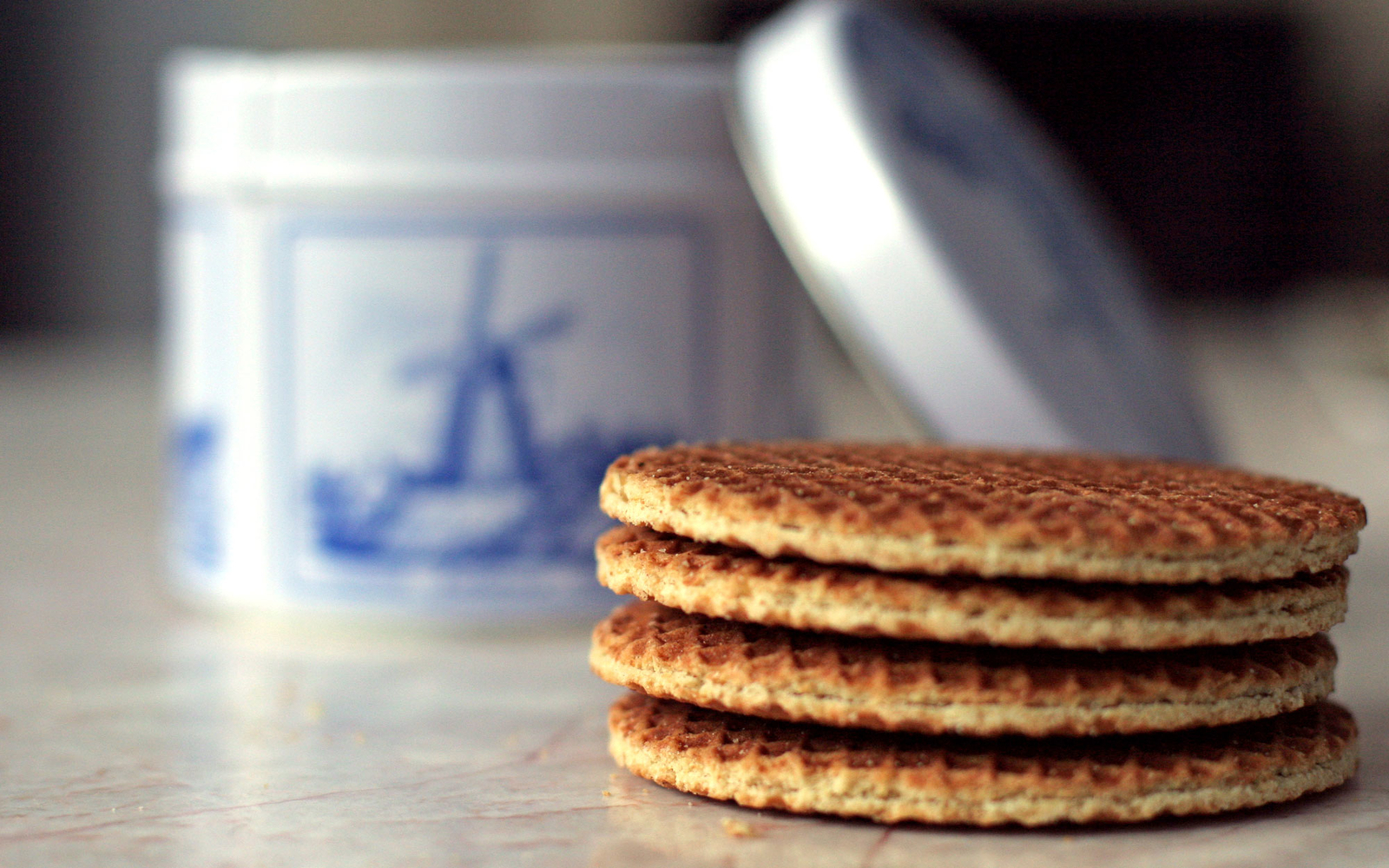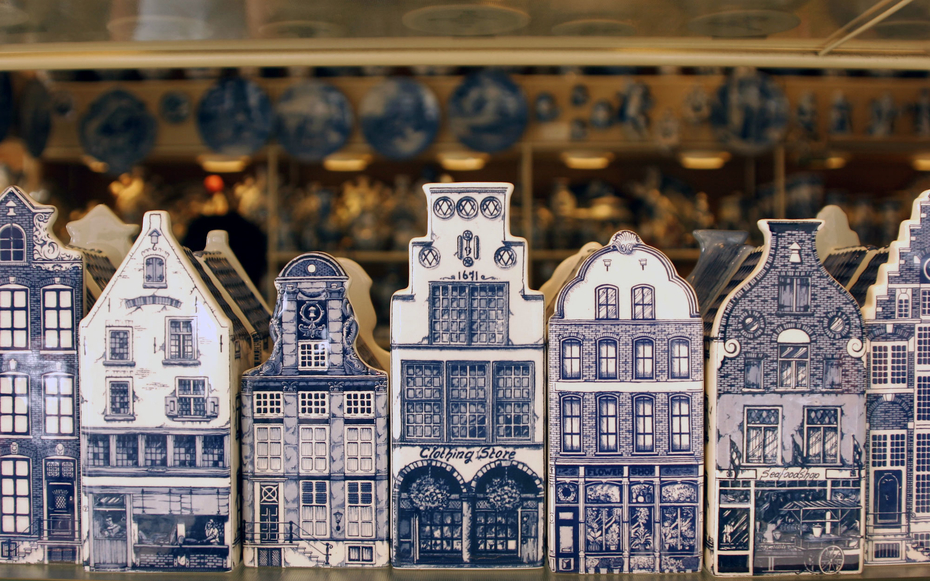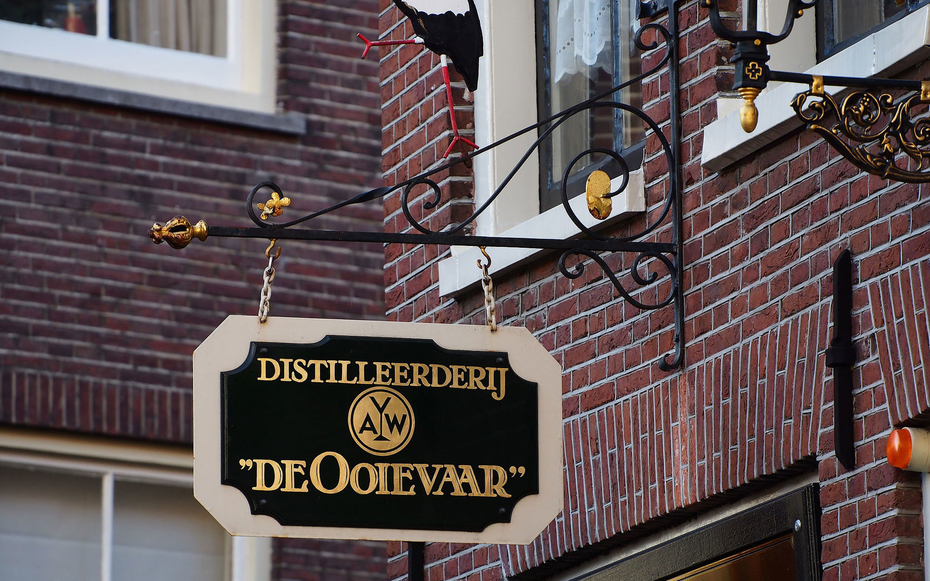
Don’t forget to save room in your carry-on if you’re heading to Amsterdam. Alongside the must-buy—or must-avoid, depending on your taste—tourist trinity of cheese, tulips, and clogs, we picked the three best things to bring home with you.
The signature Dutch cookie, stroopwafel—which consists of two buttery wafers sandwiched together by caramel syrup—is hard to resist. After eating them warm from a street vendor or in a café in Amsterdam, you’ll want to take some home with you. They make great gifts, acceptable to all but those on the strictest diets.
Reputedly, the city’s best stroopwafels are made at Lanskroon, a historic canalside bakery and tearoom. The street vendor at the Albert Cuyp market comes in a popular second. Tins of stroopwafels can also be bought in retail chains Hema and Albert Heijn. Pro tip: Make sure you get the all-butter variants. You can also combine Delft and stroopwafels, by buying the Royal Delft canal house stroopwafel jar (from the Bijenkorf) to keep your cookies in.

Nothing says Holland quite like Delft Blue, the trademark blue-and-white pottery that dates back to the 16th century. Not-so surprisingly, you’ll see it everywhere in Amsterdam, from classic tiles to minimalist modern bowls. Antique pieces can put you back thousands of euros, but there are cheap-and-cheerful versions you can pick up for a few euros in the markets, If you’re after the real deal, head for Galleria D'Arte Rinascimento, which stocks both old and new pieces (the aged pieces are often great value for money), or for the Jorrit Heinen Delft Shop. For the latter, there’s a branch on Prinsengracht and also a location in the historic former city mint, the Munttoren, which stocks a wide assortment of pieces made by the centuries old and still operating Royal Delft factory.
Alternatively, check out the &Klevering pieces in the Rijksmuseum shop, which were inspired by 16th and 17th century originals in the Rijksmuseum collection. For something more modern but still traditionally Delft, the Bijenkorf department stores stocks the simpler, more contemporary Blue D1653 range of Royal Delft, designed by Arian Brekveld, Chris Koens, and Damian O’Sullivan.

Distilling is an ancient Amsterdam tradition, and to this day A. Van Wees uses the time-honored techniques of Holland’s glory days to produce its unique liqueurs. Many of the recipes date back to the 16th century, some even to the Middle Ages. Bruidstranen (‘bride’s tears’), for example, was traditionally passed around at weddings. Distilled from oranges, cloves, almonds, nutmeg, and cinnamon, the liqueur contains flakes of pure silver, symbolizing tears (of joy, we hope). Vergeet mij Niet (‘don’t forget me’) was given by women to their husbands and sweethearts as they sailed off on Dutch trading ships in the Golden Age. It’s a heady mix of roses, lavender, violets, rum, brandy and spices.
A. Van Wees produces its extraordinary concoctions in the old Distillery de Ooievaar in the Jordaan, which is a must-visit. Founded in 1883, it remains a family business, using the ancient four-step distillation process to produce new liqueurs, too. Looking for something more modern? Yuzu is the distillery’s latest flavor.